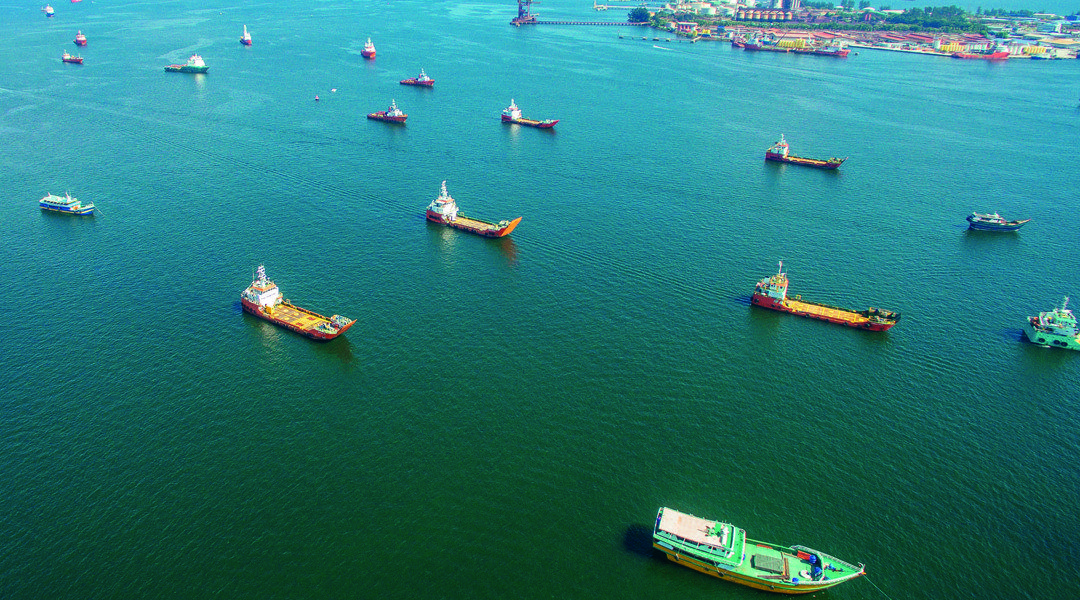The Blue Sky Maritime Coalition (BSMC) has released a new report which provides a current benchmark for CO2 emissions from the major vessel sectors that make up maritime transportation in North America.
Key highlights
Annual CO₂ emissions from the NAWT fleet and from ports in North America were estimated to amount to 66 million tonnes in 2018, approximately 1.0% of the 6,6571 million tonnes of total North American CO₂ emissions in that year. Of that 66 million tonnes, 47 million tonnes are attributable to fuel consumed by the NAWT fleet and 19 million tonnes by North American ports.
The fleet
Total CO₂ emissions from the 9,500 vessels in the NAWT fleet amounted to approximately 47 million tonnes in 2018. That amounts to 0.7% of total emissions from the U.S. and Canada, 2.4% of total emissions from the transportation sectors of North America, and 4.5% of total CO₂ emissions from the global shipping fleet (as reported by the IMO in the 4th Greenhouse Gas Study).
Ports and terminals
The ports of Houston, New /New Jersey, Los Angeles, and Long Beach provide comprehensive information on both tonnage throughput and emissions. Total tonnage throughput for the U.S. amounts to 2,349 million short tonnes; these four ports accounted for 25% of the cargo movements into and out of the U.S. in 2018.
Total Canadian port tonnage was 335 million tonnes in 2017. Applying the 0.007 ratio derived from the four U.S. ports, total CO₂e emissions from Canadian ports is estimated to be 2.4 million tonnes.
Total North American port related emissions thus amount to 18.9 million tonnes of CO₂e.
Net zero fuels and electricity
Total green methanol production funded by Maersk is reported to amount to 0.7 million /year by 2025 of green methanol bunker fuel and 6 million /year by 2030 globally (meeting approximately 25% of their fuel requirement). The electricity required to produce net-zero fuels is immense. For example, 317 TWh would be required to produce the 31 million tonnes of methanol necessary to replace all the high carbon-content, oil-based fuel now consumed by the NAWT fleet. 317 TWh would amount to more than 10% of the projected renewable electricity production of the U.S. in 2030.
These net-zero calculations illustrate the challenge of converting the NAWT fleet to zero emissions. But they also show a path to achieving that goal. LNG is already making a significant headway in the NAWT fleet (see the comments in the offshore supply vessel and containership sections). Methanol is also being championed by Maersk, a key industry leader with whom many in the NAWT business already have close commercial relationships.
Operational factors
Advances in cellular, satellite, and internet-based communications over the past decade have opened up new opportunities to optimize the use of existing vessels. Such optimizations could now be based on real-time, high quality data on vessel traffic, weather forecasts, port and berth congestion to provide predictive models. These models would require the involvement of all elements of the supply chain to provide up-to-date information to a shared clearinghouse.
The benefit of these models is that vessels could be confidently operated at the best economic speed (lowest fuel consumption and therefore emissions) available to get the cargo to the berth for a specific time slot rather than next open availability. Current business practice causes vessels to arrive as quickly as possible consuming more fuel in transit and then in most instances to wait at anchor where more fuel is consumed generating onboard electricity.






